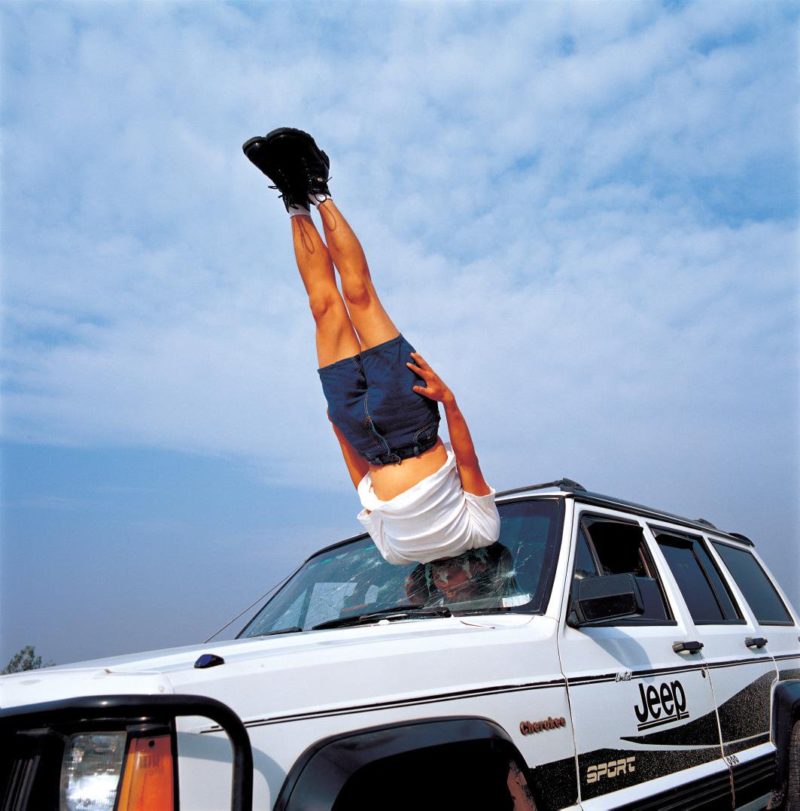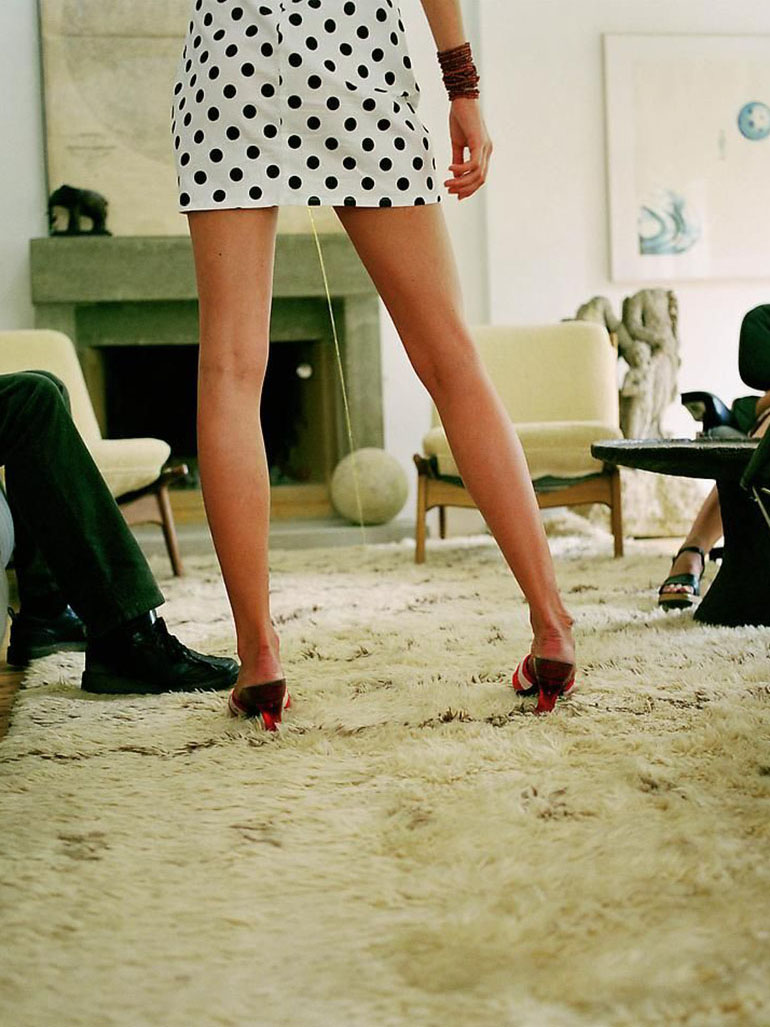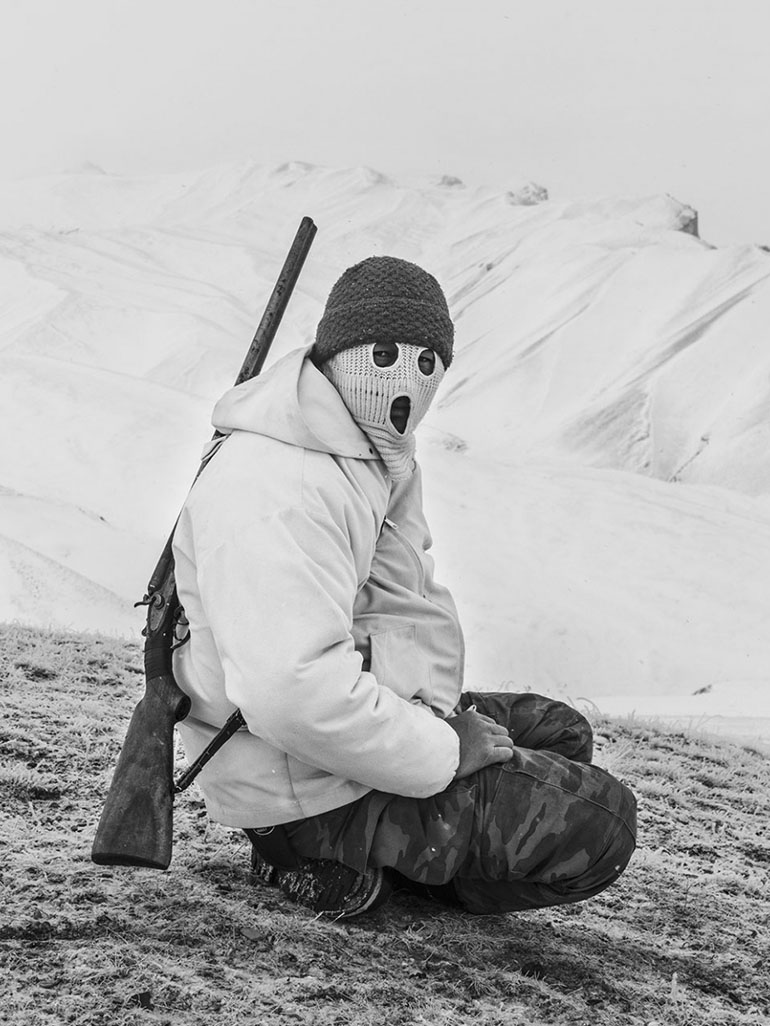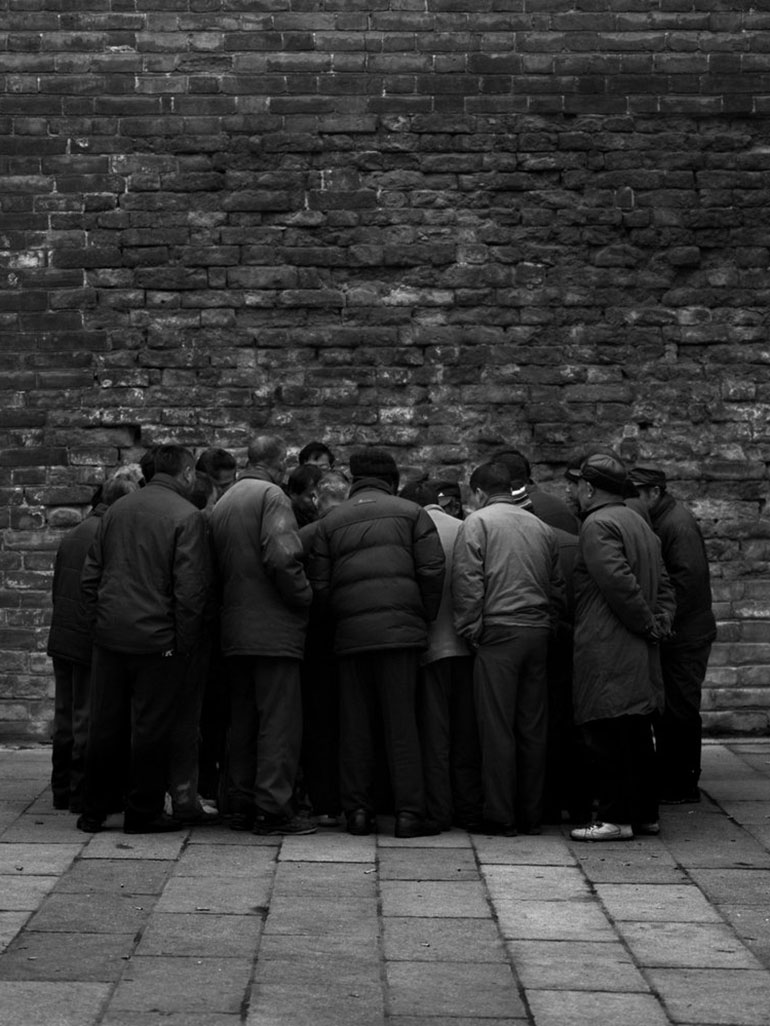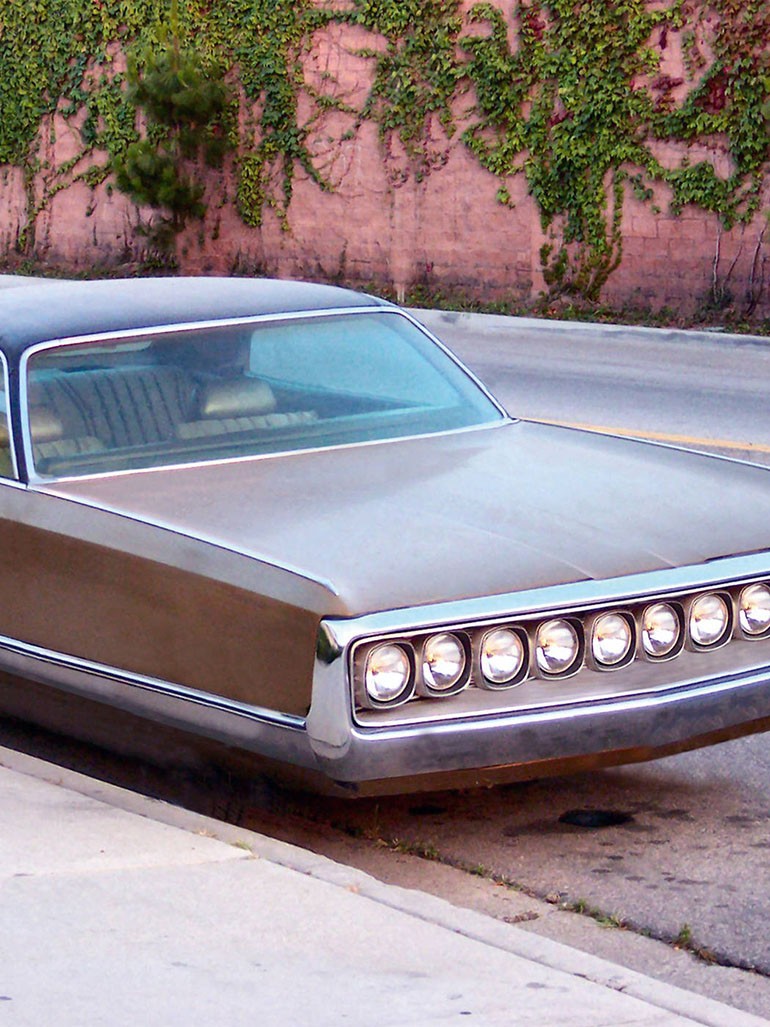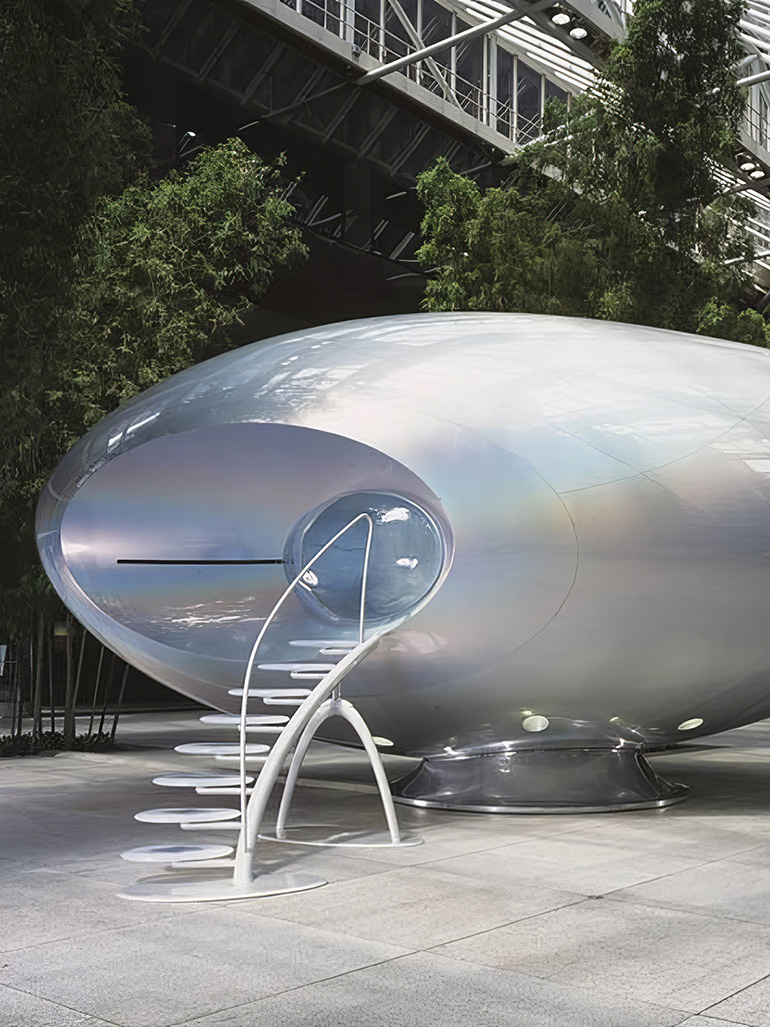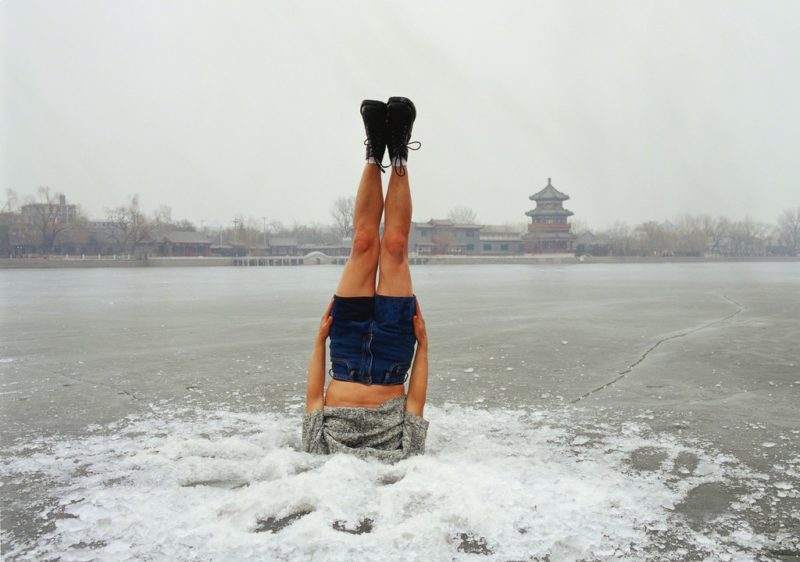
Introduction
Li Wei’s work is anything but cautious. In fact, it can be described as peculiar or quirky, depending on your perception of life. Characterized by bodies that are often positioned in near-impossible angles, such as buried in windscreens and toppling off skyscrapers, Li Wei’s bizarre works are distinctive.
His popularity and rise to fame were catapulted by his gravity-defying Fall series, which consisted of different scenarios that saw the artist bury his head in various sticky situations such as in the windscreen of a car, in a pile of books and newspapers, in Como lake, in walls, and so on.
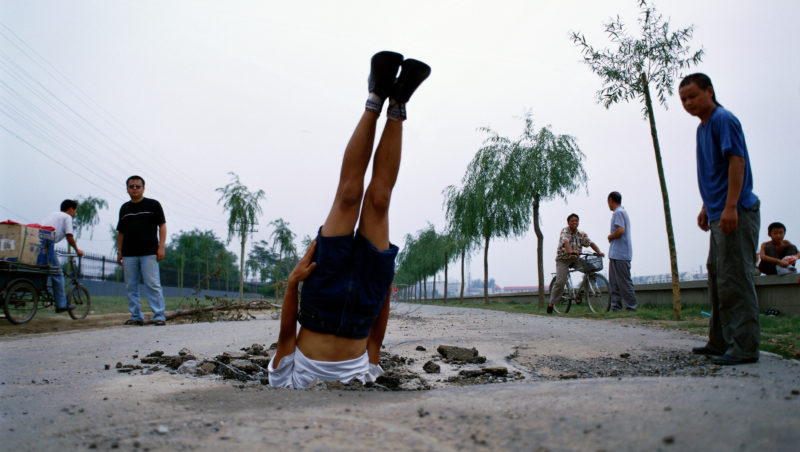
Biography
Li Wei was born to humble beginnings in 1970 in China in the Hubei Province in a countryside village located along the Yangtze River. As a kid, he was always fascinated by nature, surrounded by rice fields where he would play and explore. In college, he studied oil painting, but it was not until he moved to the East Village 12, where he encountered legendary artists such as Zhang Huang 34 and Ma Liuming, that his artistic direction begun to take shape.
While at the East Village, Li came to observe that the monotonous rhetoric of painting was not what he aspired for his future and decided to give up on the medium completely.
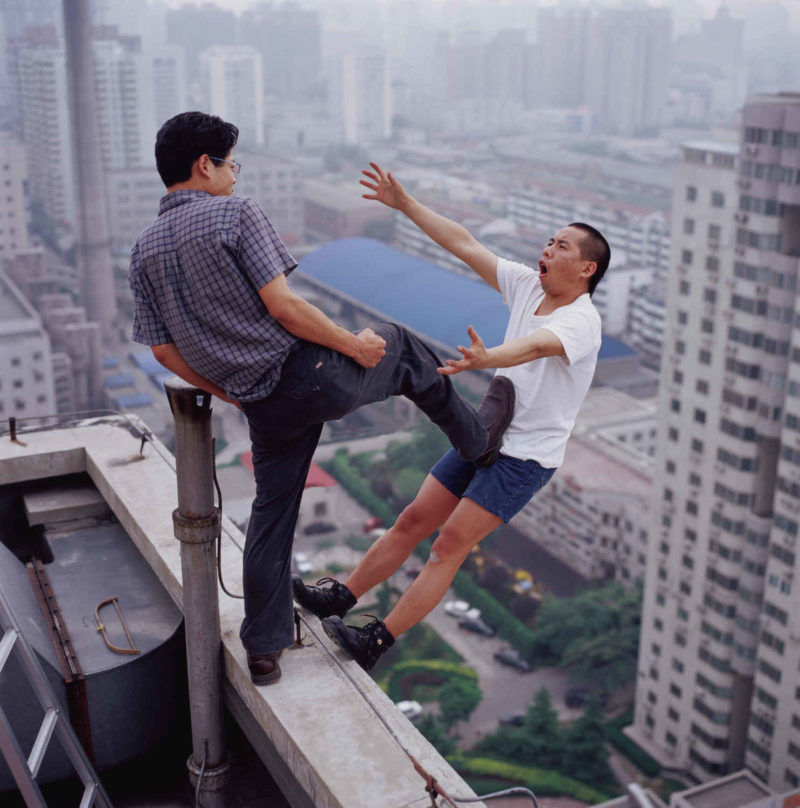
Li says, “I went to college to major in oil painting and later started to create performance art, using the body as an element of creation. At that time, photography was just a record of the performance scene. Later, I thought: It can’t just be within the previous concept of performance art. I want to shoot as well”.
The performance elements common in the East Village at that time led to his career as a performance artist, which was later followed up by photography. Today, Wei uses photography to express himself, but he also utilizes other mediums, such as statues and videos.
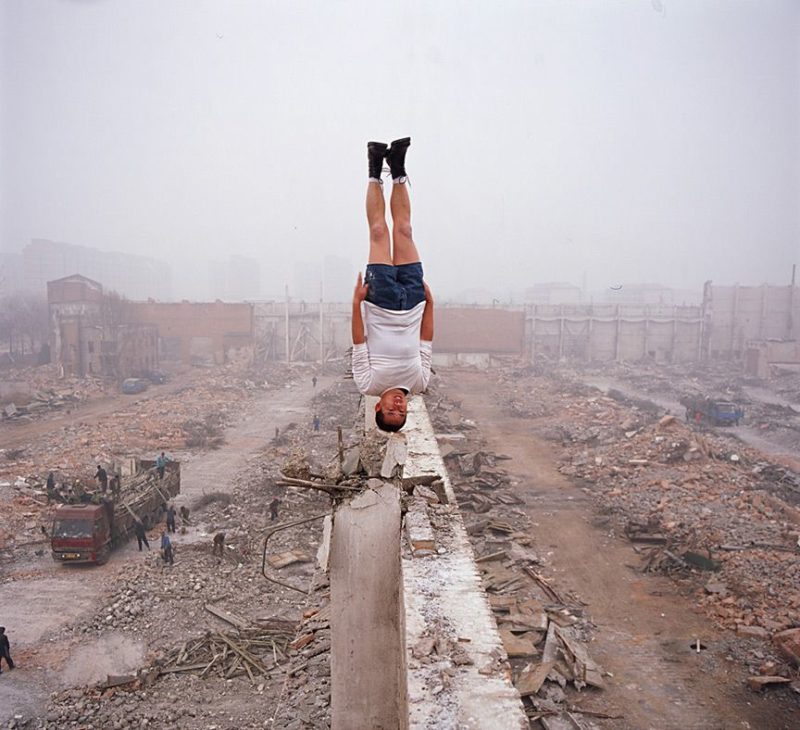
Inspiration
Traditional Chinese aesthetics and philosophy have had a major impact on his work and are the core of his work. Since he was a child, his grandmother told him many myths and stories which greatly inspired him:
There is a lot of magical energy flying around the sky and passing through walls. These magical energies fight against the injustice of the world.
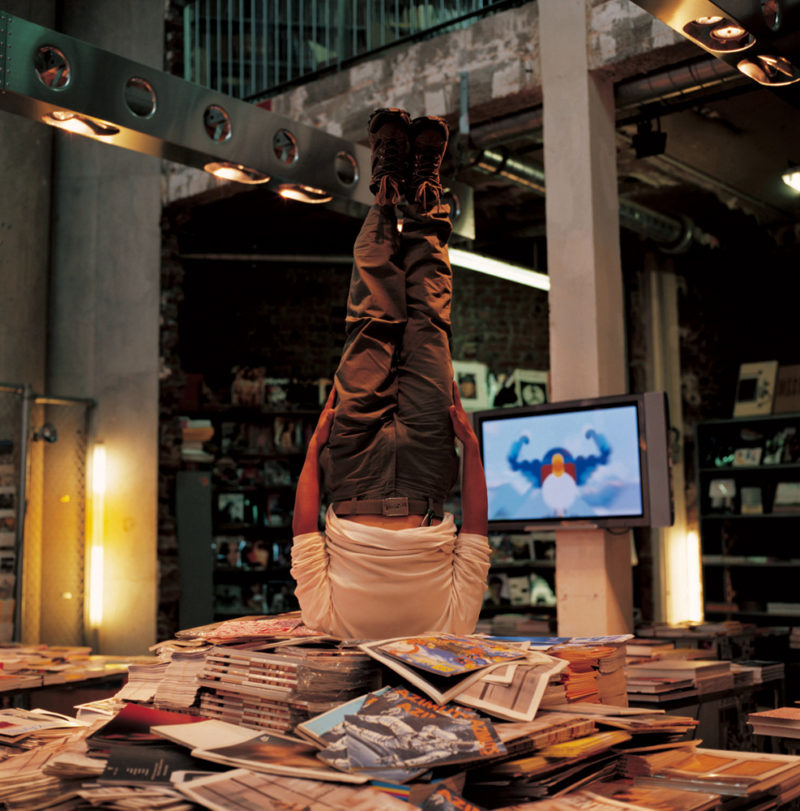
Li specifically mentions the tales as a source of inspiration:
- The Foolish Old Man Moves the Mountain (愚公移山, Yú Gōng yí shān
- Hou Yi Shoots the Suns (后羿射日, Hòu Yì shè rì)
- Nu Wa Repairs the Sky (女娲补天, Nǚ Wā bǔ tiān)
- Chang’e Flies to the Moon (嫦娥奔月, Cháng’é bēn yuè)
- Journey to the West (西游记, Xī Yóu Jì)
- List of Gods (封神榜, Fēngshén Bǎng)
Li says that Taoist immortal culture is the culture of flying, seeking to fly to the sky, living forever, and traveling through time and space at will. Flying, in Taoist mythology, is often a metaphor for transcending the earthly plane and achieving a state of spiritual enlightenment or immortality. This can be seen in tales where characters ascend to the heavens, travel across the sky, or transform into celestial 5 beings.
How he creates his works
When he first started, Wei would use mirrors to examine and play with reality. By using mirrors, he was able to create false superimpositions and syntheses in interesting ways that allowed him to express his personal thoughts and experiences while addressing the social issues that occurred in contemporary society.
Li does not consider his work to be political, however. He says, my works, especially the early ones, contain many comments on contemporary human and social issues. In recent years, my works have been more about the imagination of the free integration of human beings and the universe.
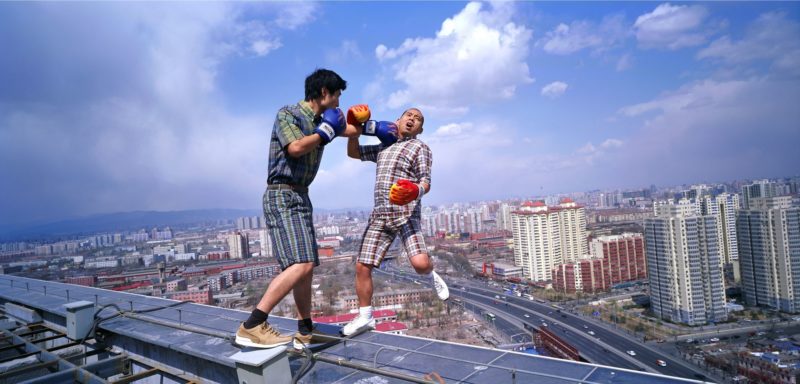
Li describes the creative process, from the initial concept to the execution of an anti-gravity image, as follows: I often write down ideas in the form of sketches. As time passes, I determine that the concept can be completed. Then, I start to consider the production of props, the environment selection, the body’s presentation, and the wire equipment’s preparation.
When everything is ready and the weather conditions are suitable, the shooting time is determined. The preparation may take several months or years (including psychological preparation). The shooting scene is generally completed in one day.
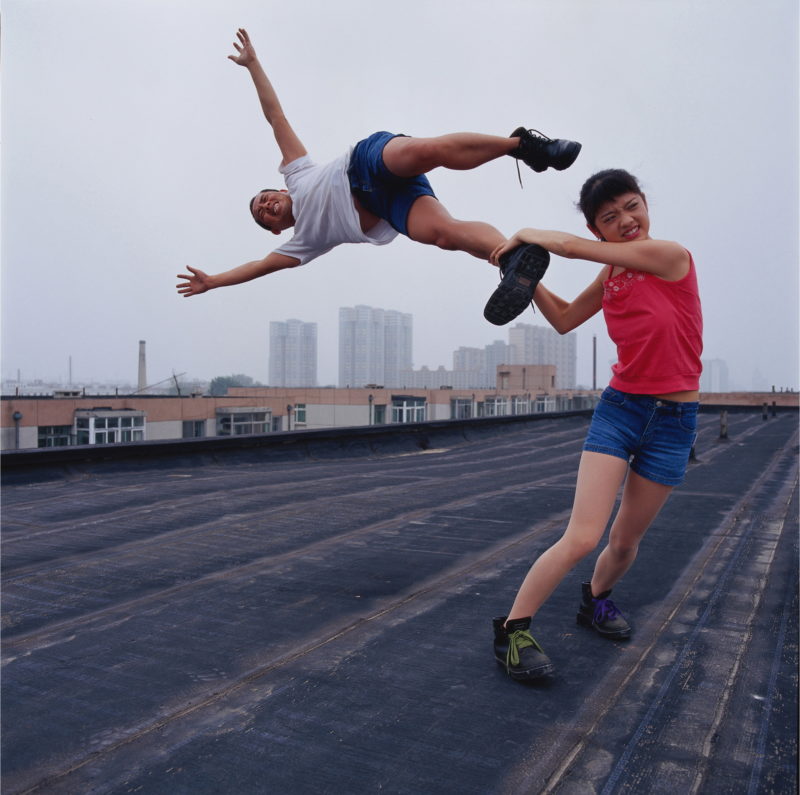
In recent years, Li has been creating his works more freely, flying more freely, incorporating more elements and power of the times, and also adding intelligent AI, virtual world and real space into his works. He hopes that, in the future, more smart technology applications will be incorporated into his free flights.
Interestingly, the advances in photography have not impacted his creativity significantly. Li responds: The advancement of photography technology is only an advancement of technology, which makes it easier for me to complete and achieve my goals, but it is not necessarily an advancement of ideas, so the output of unique ideas is the most important.
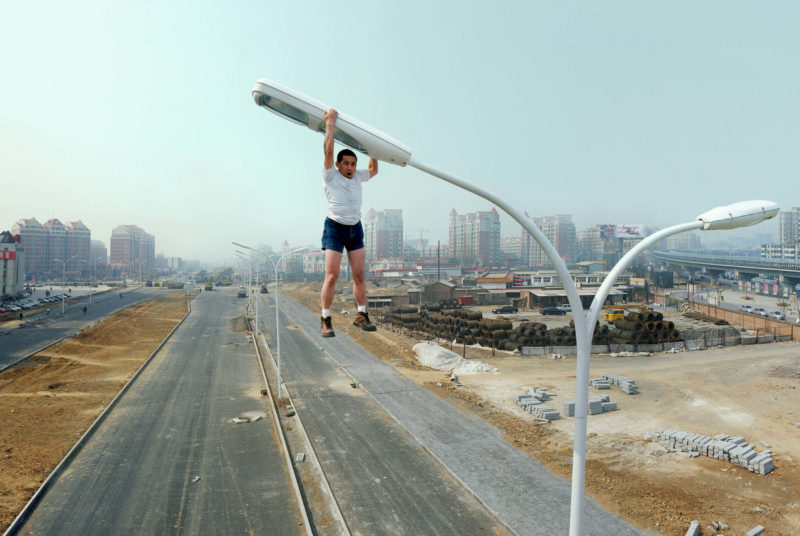
Challenges
29 Levels of Freedom has special meaning to Li because it allows him to understand his artistic thoughts and directions of flying freely. It also exemplifies the numerous challenges he faces when creating artworks, especially those involving complex physical stunts. According to Li, the biggest challenge is his endurance in flying in the air.
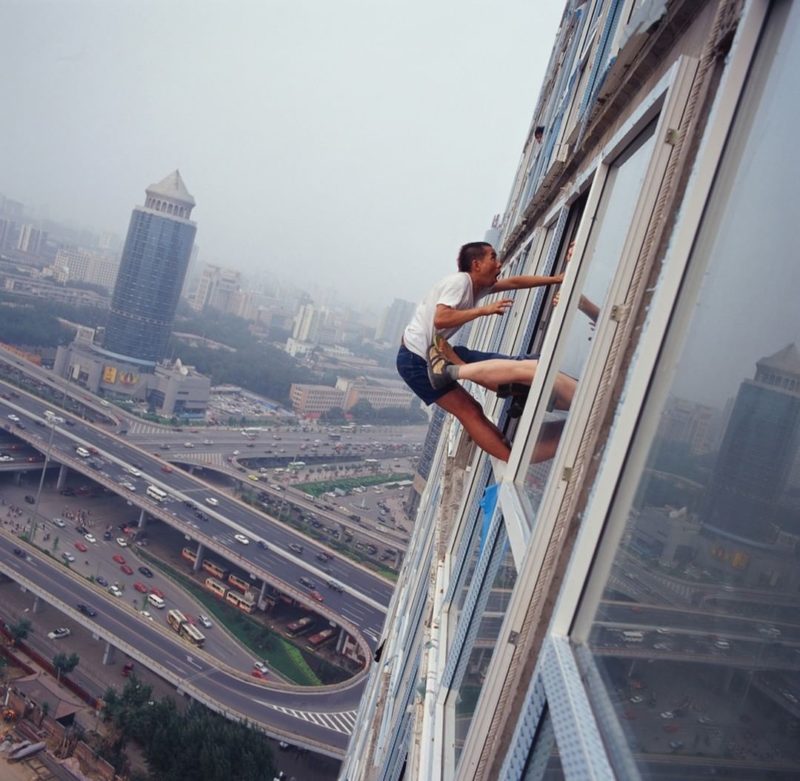
I have to present various states of each work in the air and overcome the balance between forces in different directions. This is a test of my body and endurance.
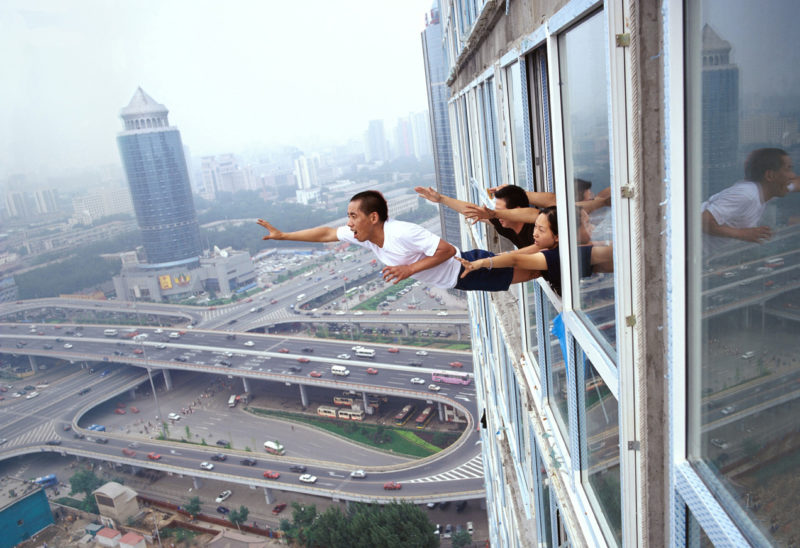
Li speaks about 29 Levels of Freedom, which was completed on the 29th floor of Jianwai SOHO in Beijing CBD, a 30-story high building. Two thin steel wires were hung from the 30th floor on his waist. His friends grabbed his calves and his feet pushed him out of the window.
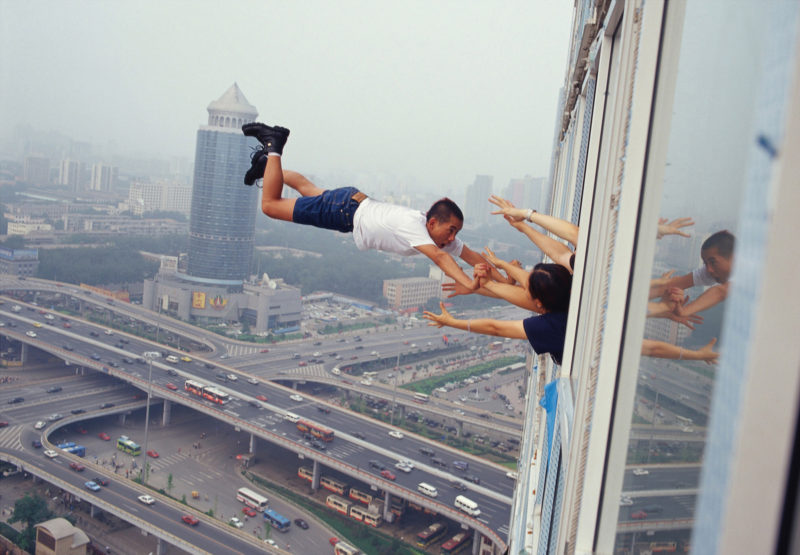
I had to keep my body straight and fly forward into the city sky with my hands. From this height, people and cars on the ground looked insignificant. It was a great test for my psychology.
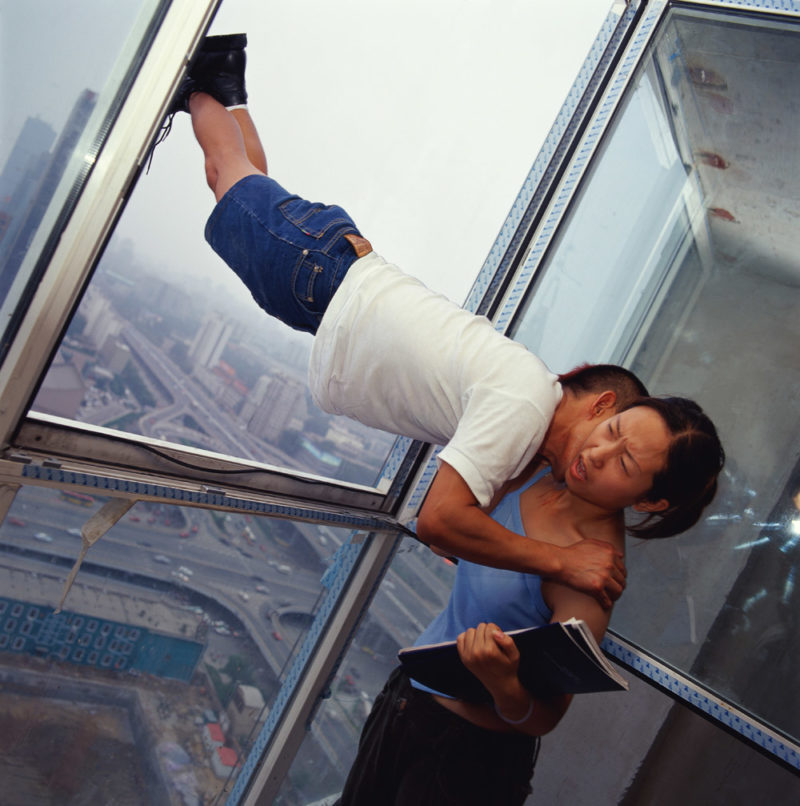
Li brings up Flying over Venice (2013) as another example of the sometimes cumbersome process. Because driving is not allowed in Venice, Li had to rent a ferry with cars, drive a large crane to the ferry, and then drive to the sea in Venice to shoot. The wind and waves were strong, and he wanted to make sure that his body would look straight in the air. Li also needed to maintain the direction and let the colorful smoke fly behind him, all while flying in the air.
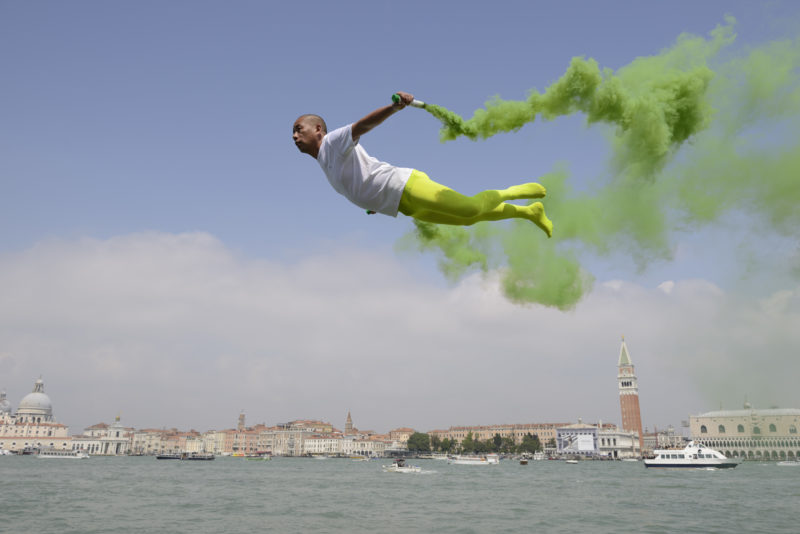
Technology: Safety precautions & cameras
For Li, ensuring safety during filming is a top priority. Before he flies, he fixes two cameras in place, adjusts the composition and focus, and changes the aperture to 16. Then, when flying in the air he adjusts his body posture and starts taking selfies.
He relies on WIA (Wireless Image Acquisition), wearing a type of safety harness used during stunts or complex camera operations in filmmaking. This full-body was customized by Li himself in Hollywood, USA. He also often relies on a crane or helicopter and a retractable gantry that he developed. The latter can be placed in a car and shot anywhere, including high-rise terraces.
Most of the images he shoots are captured in real locations, using Hasselblad, Sony A7R, and Nikon D800.
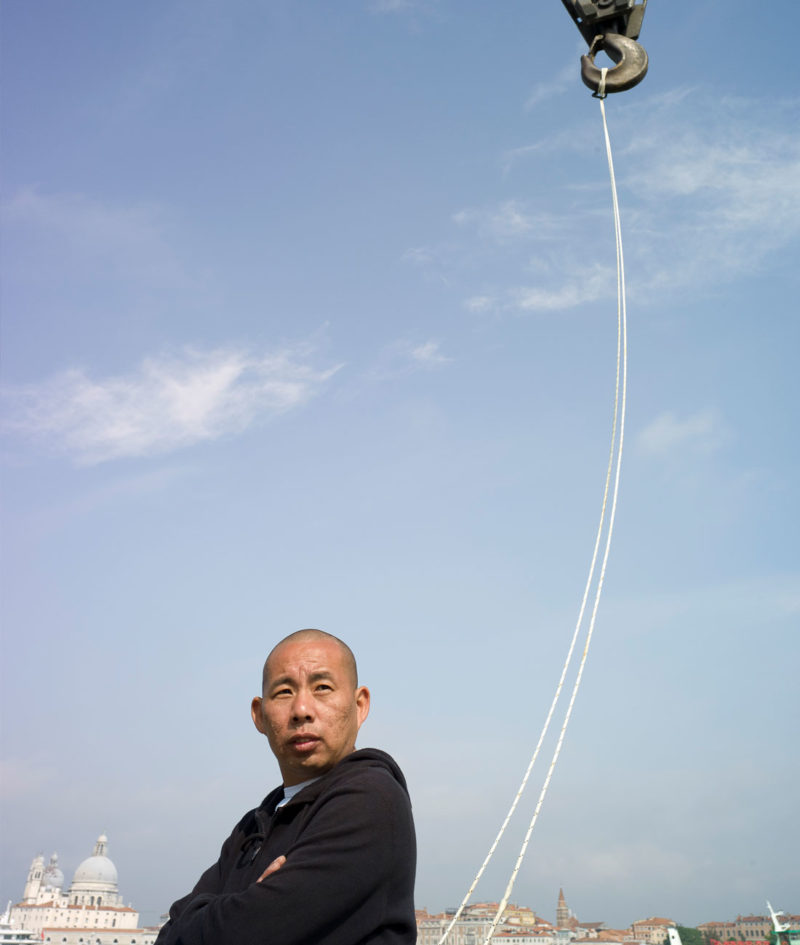
Collaboration
Working with others is an essential element of Li’s approach. He often collaborates with friends, who add their own free-flying imagination into the works, which Li greatly enjoys.
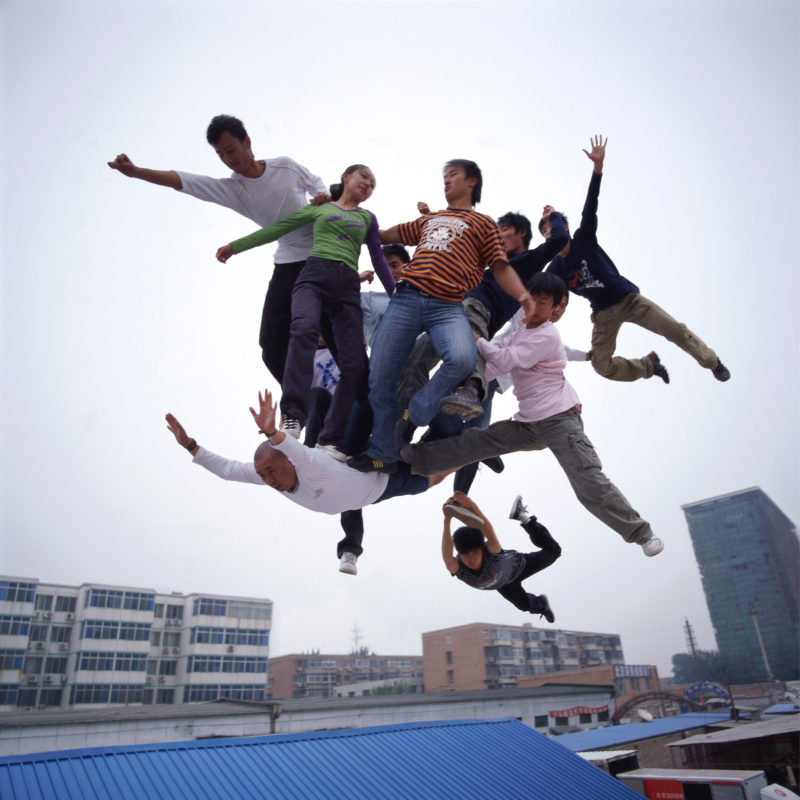
Since he often appears in his photos, he has worked with photographers for almost 30 years. Li communicates his ideas with the photographer and shows him sketches when shooting. Because they have been working together for so long, the photographer immediately understands and completes his ideas well. Occasionally, Li also does take selfies.
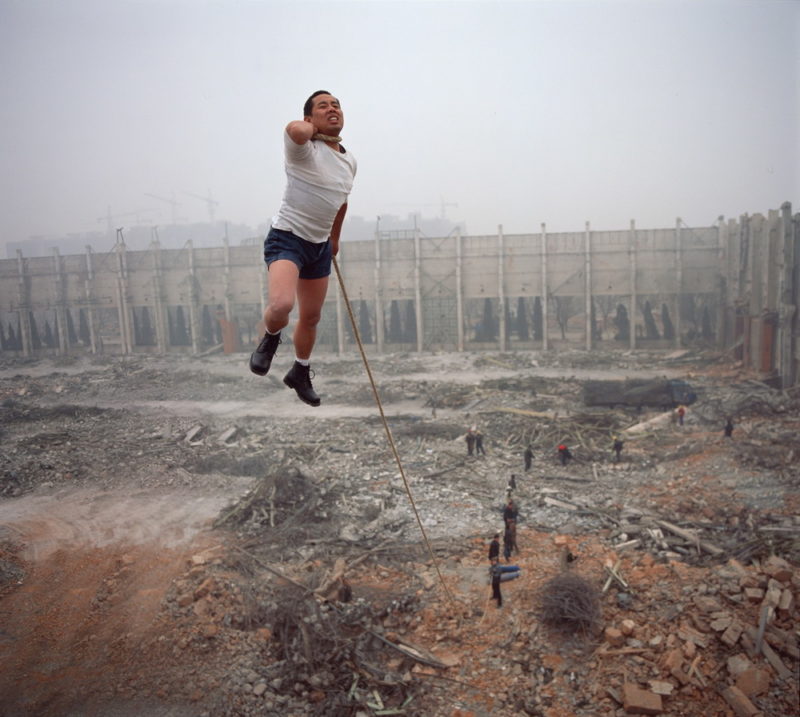
Recognition
Having gained international recognition, Li understands that the global art world views his work differently from that of his Chinese audience, mentioning a global cultural perspective.
According to the artist, his global audience can see the unique language and unique thoughts of his art and feel the emergence of a unique culture. However, the Chinese art world still views his works with the thinking of Western art history.
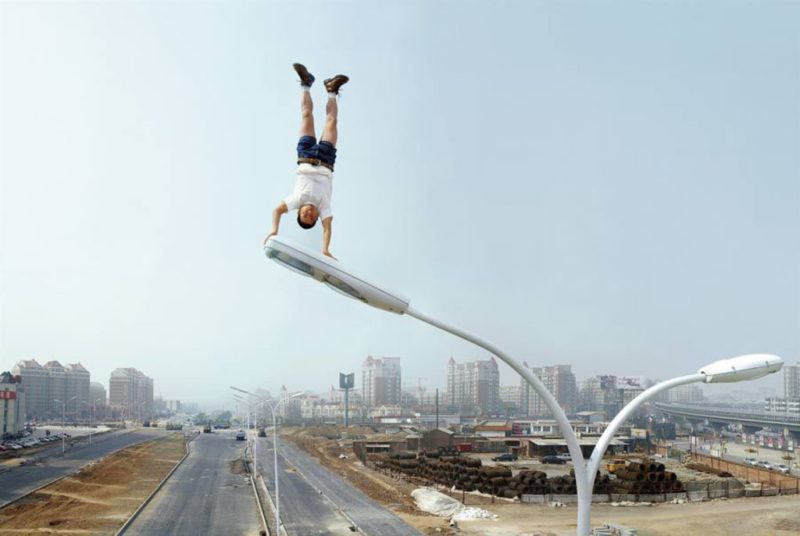
In art, we have not yet taken the initiative to find the confidence to explore unique art, and we have not yet understood the meaning of a new culture being around us in life.
There may be very few people in China who can understand my art.
Analysis
Often depicted in gravity-defying scenarios, his works comprise a perfectly balanced combination of photography and performance art. His installations also consist of videos that create illusions of a dangerous reality. Over the years, his unique works have been featured in many galleries and magazines.
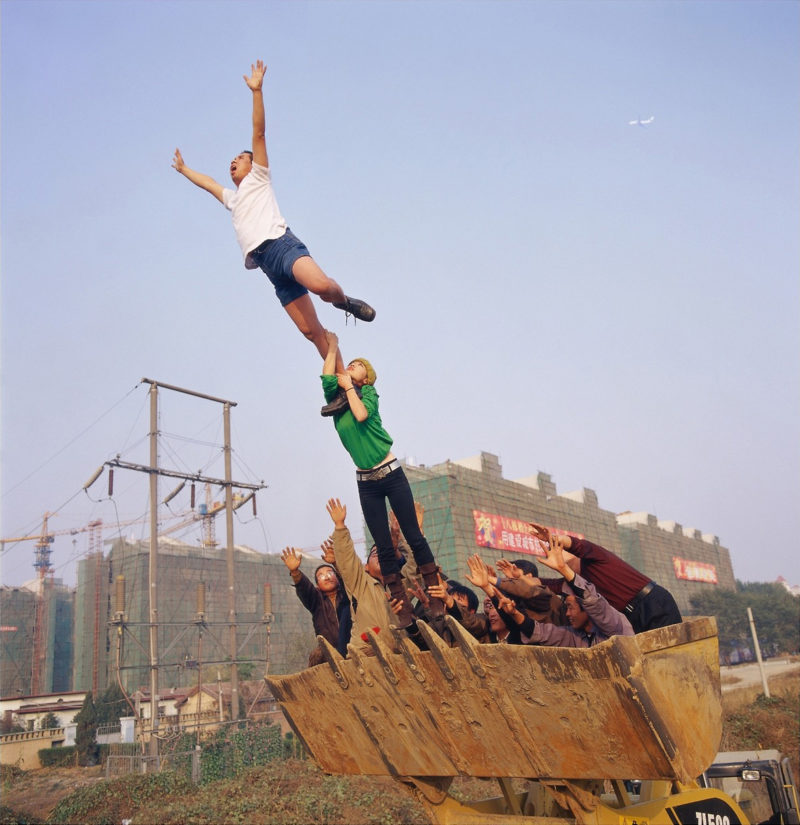
Many of his works seem to defy gravity and play with concepts of space. Asked about the message or feeling he hopes to convey through these images, Li responds:
My work is actually the concept of free flight, transcending the existence of all forces. Flying is the imaginative and intelligent future of human life.
Li says:
I want to present the eternal pursuit of mankind: freedom of human thought and spirit, human immortality, and the unity of human freedom and the universe.
